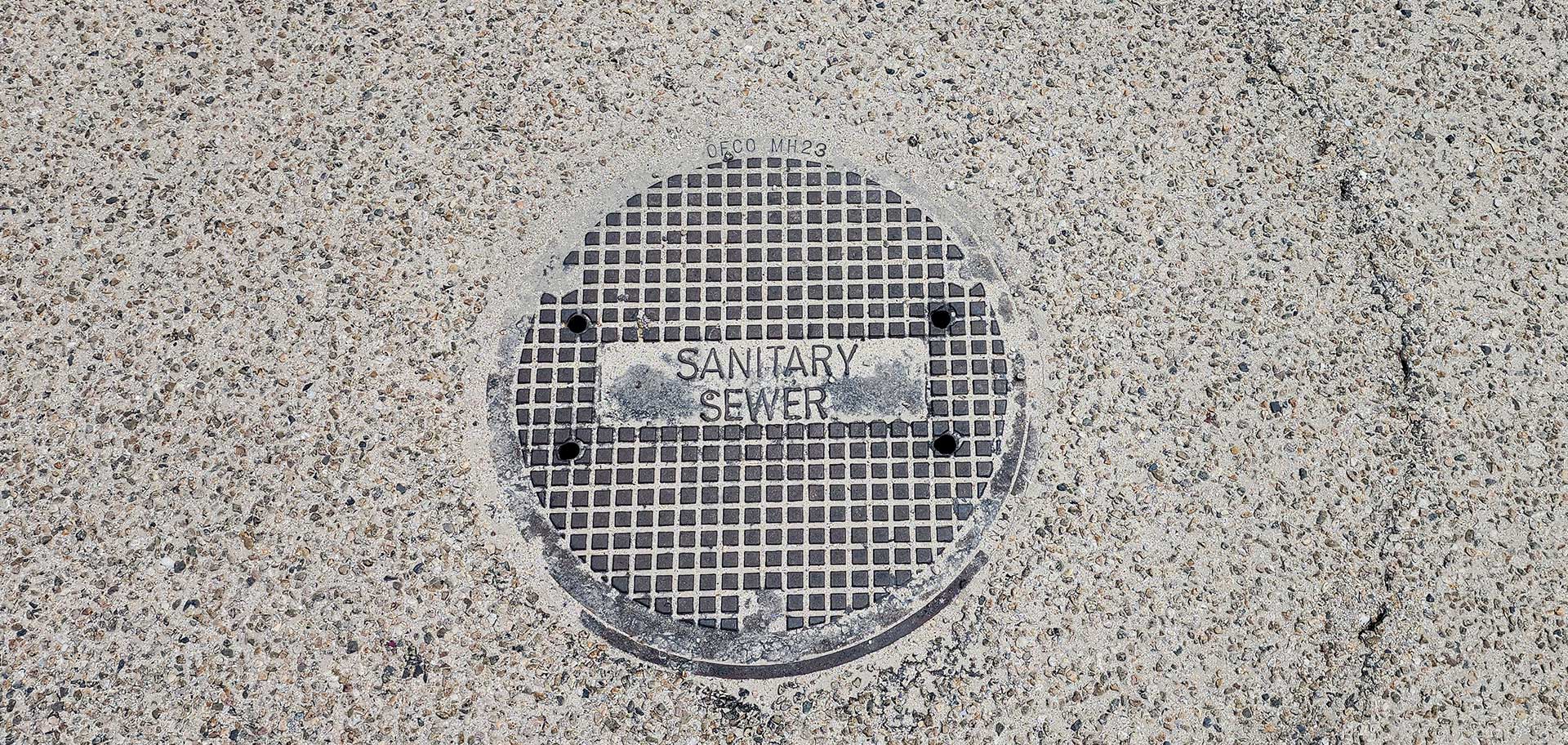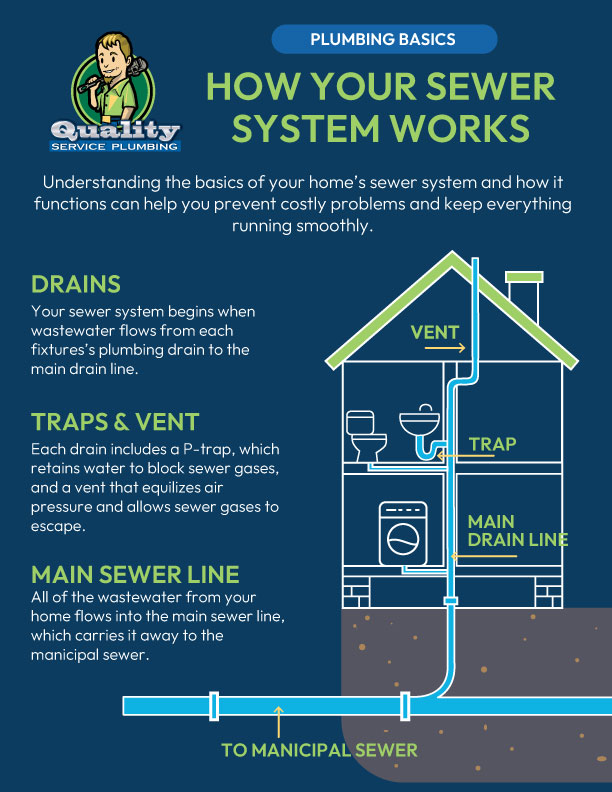How Your Sewer System Works
Your home’s sewer system is one of the most important—and often overlooked—parts of your plumbing. It quietly whisks away wastewater from your sinks, tubs, toilets, and appliances, helping keep your home safe, sanitary, and functional. But how does it all work?
Let’s break it down.
The Journey of Wastewater
When you flush a toilet, drain your bathtub, or run your washing machine, have you ever wondered where it goes?. It travels through a network of pipes inside your home and exits through the main drain line, which connects to your city’s municipal sewer system or to a septic system, depending on your setup.
Key Parts of a Sewer System
- Drain Lines: Every sink, toilet, and tub is connected to its own drain line, which slopes downward to carry water away using gravity.
- Vent Pipes: These allow air into the plumbing system to help wastewater flow smoothly and prevent sewer gases from entering your home.
- Traps: You’ve likely seen the U-shaped pipe under your sink—that’s the trap. It holds a small amount of water that blocks sewer gases from rising back into your home.
- Main Sewer Line: All individual drain lines lead to the main sewer line. This is the largest pipe in your home’s plumbing and is crucial to the entire system.
- Municipal Sewer or Septic Tank: Finally, the main line directs waste either to the city’s sewer system or your private septic tank, where it’s processed and filtered.
Common Problems and Signs
A sewer system works quietly in the background—until something goes wrong. Here are a few warning signs of trouble:
- Slow drains in multiple fixtures.
- Gurgling sounds in toilets or drains.
- Sewage odors indoors or near your yard.
- Water backing up in showers or tubs.
If you experience any of these, it may be time to call a professional plumber. Issues with your main sewer line can lead to serious damage if not addressed promptly.
Final Thoughts
Understanding how your sewer system works can help you spot problems early and keep things flowing smoothly. Regular maintenance, such as drain cleaning and inspections, can go a long way toward preventing costly repairs.
If you have questions about your sewer line—or just want a professional to take a look—Quality Service Plumbing is here to help. We know your plumbing inside and out. Give us a call.


